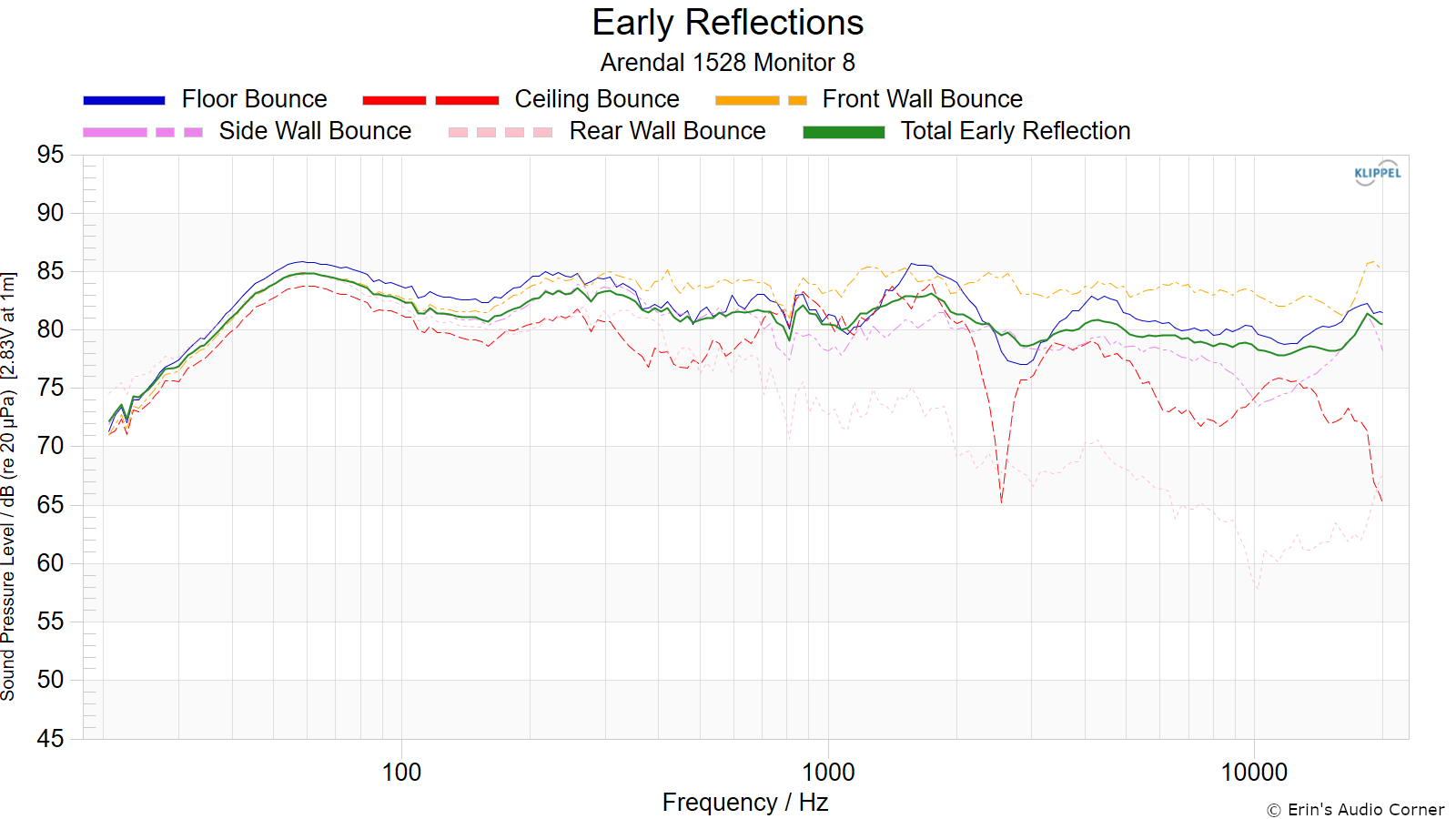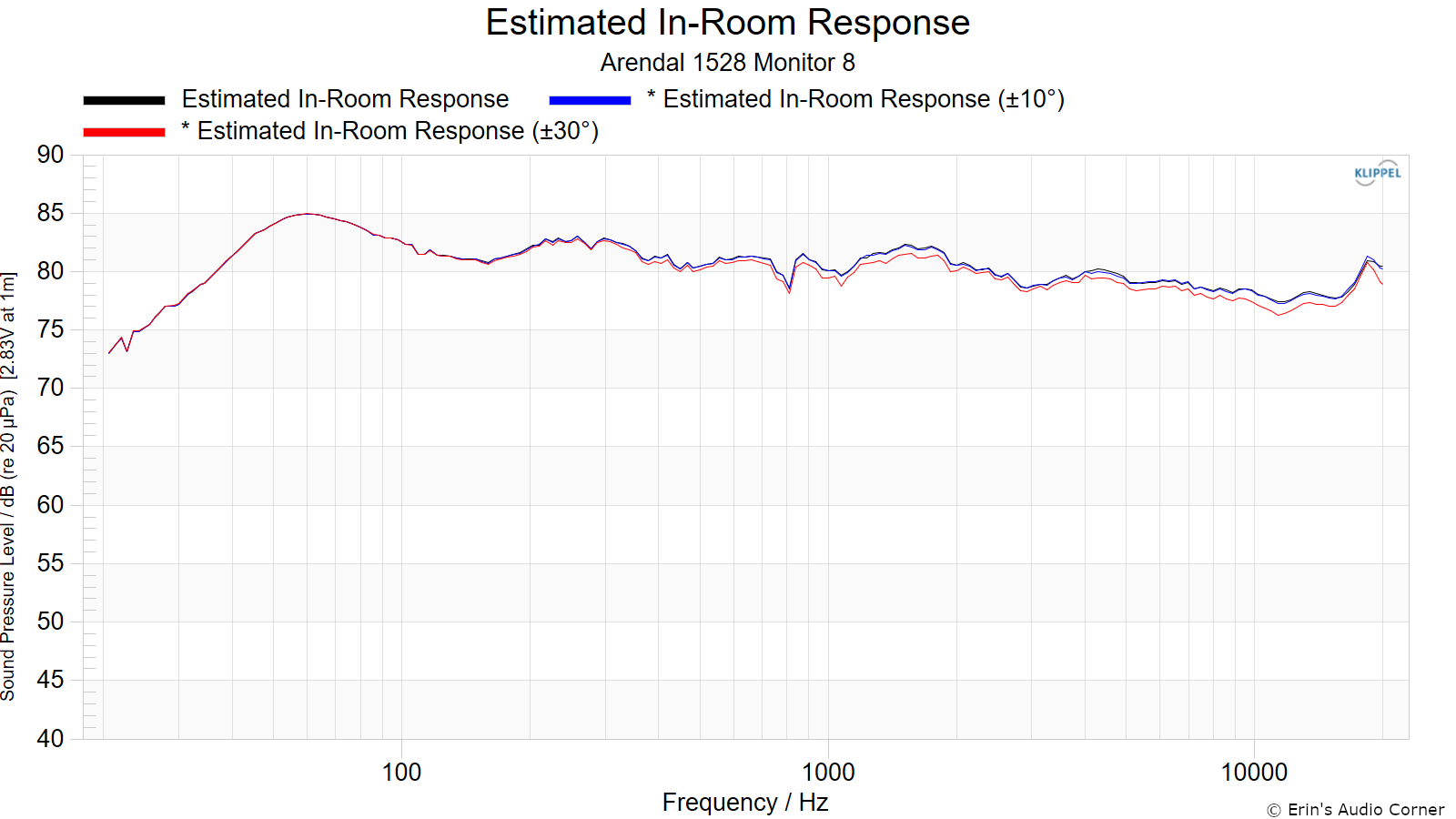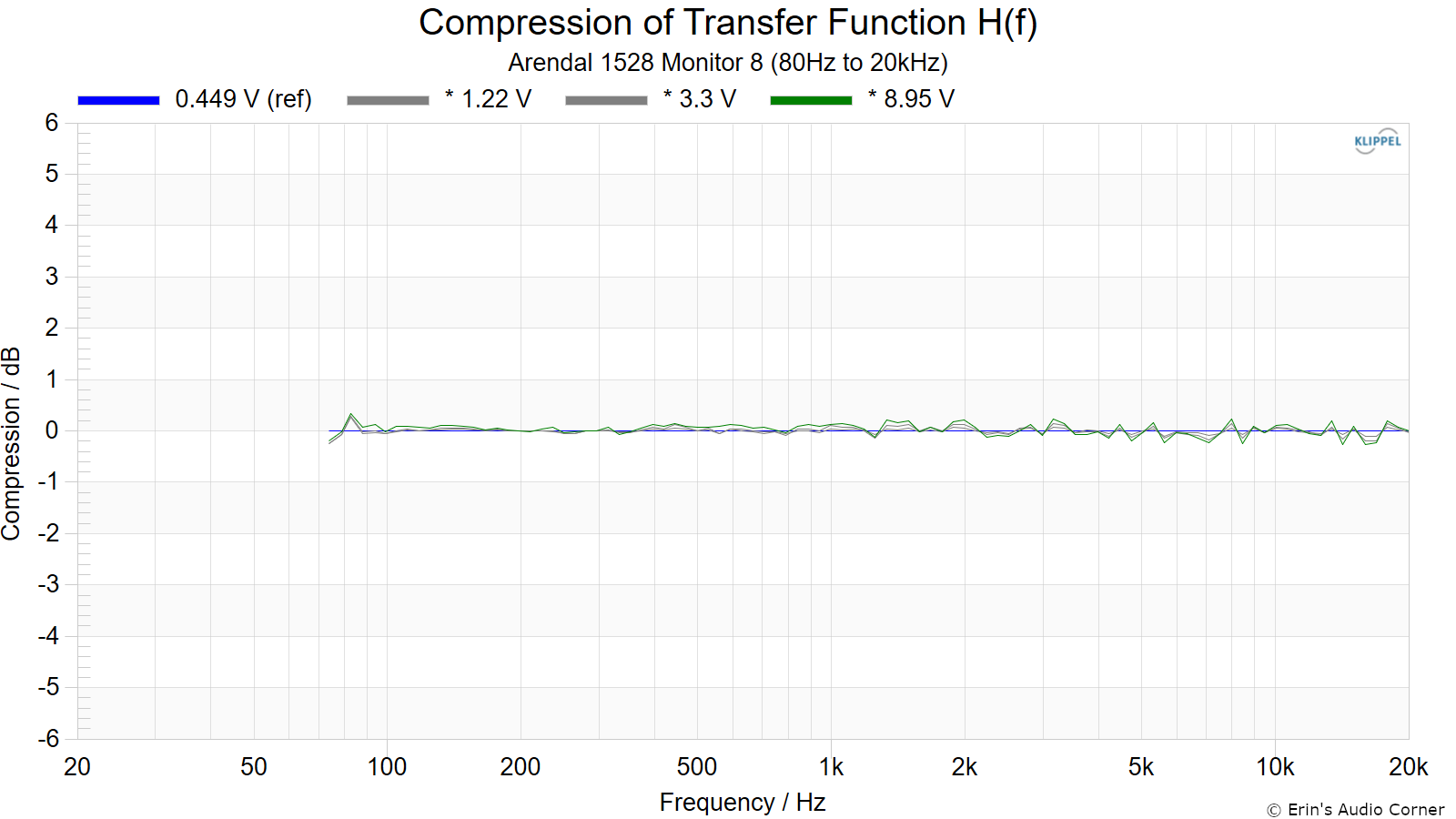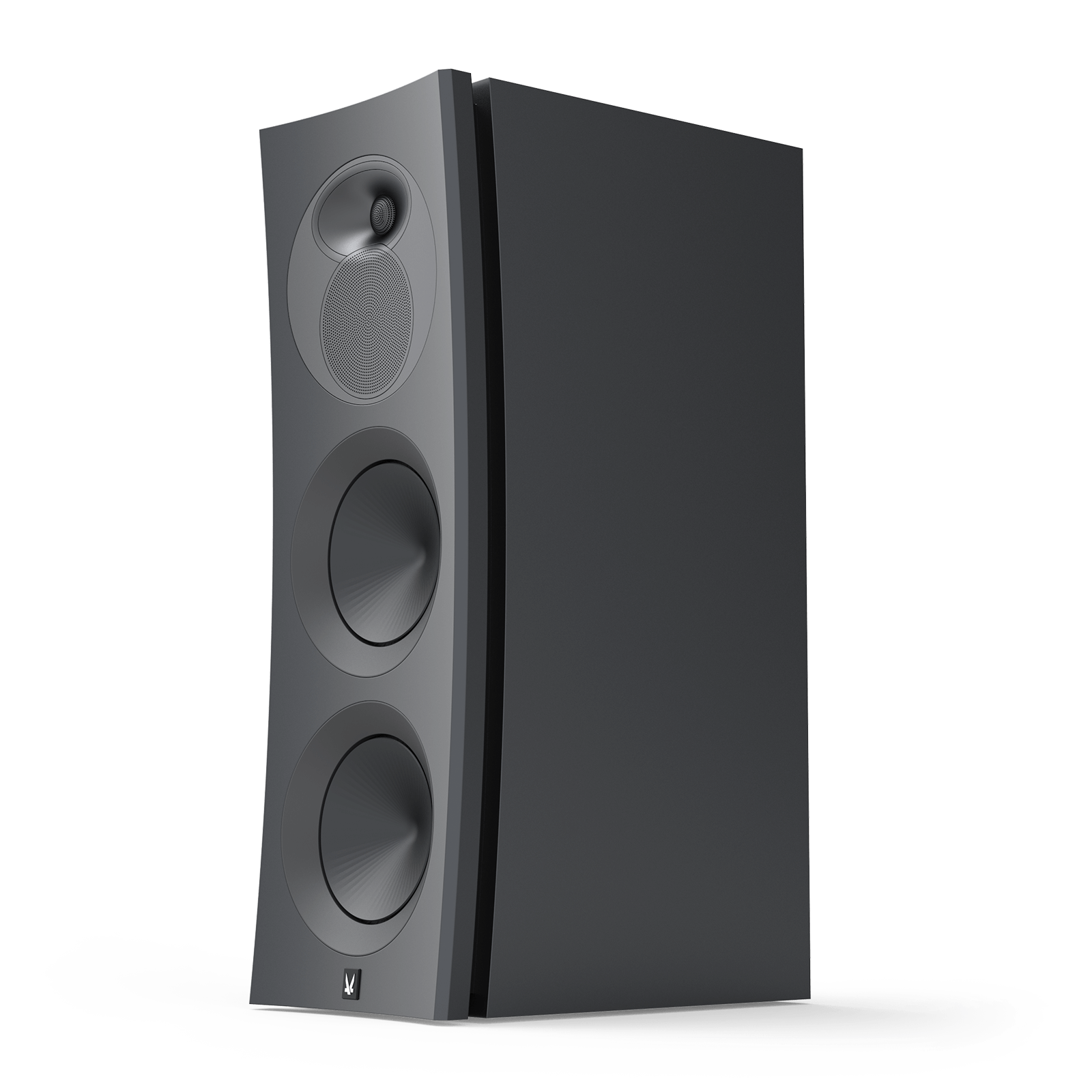Foreword / YouTube Video Review
These speakers were loaned to me to review by the manufacturer. I was not paid nor did I receive any other form of compensation for this review.
All my reviews are done on my own time with great care to give you all the best set of data and information I can provide in order to help you make a well-informed purchase decision. I offer this for free to all who are interested. In return, if you want to support this site please see the bottom of this review for ways you can help. It is greatly appreciated.
If, after reading this review, you decide you’d like to buy this speaker then please consider using my affiliate link below. I earn a small commission from it at no additional cost to you: Purchase Link:
The review on this website is a brief overview and summary of the objective performance of this speaker. It is not intended to be a deep dive. Moreso, this is information for those who prefer “just the facts” and prefer to have the data without the filler. The video below has more discussion with respect to the technical merits and subjective notes I had during my listening sessions.
- Design 3-way
- Dimensions (H/W/D) 80.8 x 29.0 x 44.8 cm / (31.8 x 11.4 x 17.6 in)
- Weight 47kg (104 lbs)
- Enclosure Sealed/Ported
- Enclosure material High Density Fiberboard (HDF)
- Ports 103.5mm inner diameter
- Break-in for optimal performance 50 hours
- Recommended amplifier Up to 700W
- Included Port Plug, Grilles
- Tweeter 28 mm
- Midrange 5”
- Woofer 2 x 8”
- Frequency response 38Hz-20kHz +-2dB
- F3 35Hz
- F6 22Hz
- F10 19Hz
- Impedance 4-ohms nominal
- Crossover frequency 420Hz / 2800Hz
- Sensitivity 85dB / 2.83V / 1m
As of this writing MSRP is $5900/pair.
CTA-2034 (SPINORAMA) and Accompanying Data
All data collected using Klippel’s Near-Field Scanner. The Near-Field-Scanner 3D (NFS) offers a fully automated acoustic measurement of direct sound radiated from the source under test. The radiated sound is determined in any desired distance and angle in the 3D space outside the scanning surface. Directivity, sound power, SPL response and many more key figures are obtained for any kind of loudspeaker and audio system in near field applications (e.g. studio monitors, mobile devices) as well as far field applications (e.g. professional audio systems). Utilizing a minimum of measurement points, a comprehensive data set is generated containing the loudspeaker’s high resolution, free field sound radiation in the near and far field. For a detailed explanation of how the NFS works and the science behind it, please watch the below discussion with designer Christian Bellmann:
IMPORTANT SETUP INFO: This speaker was measured with the reference point between the tweeter and midrange. Speaker was broken in.
Measurements are provided in a format in accordance with the Standard Method of Measurement for In-Home Loudspeakers (ANSI/CTA-2034-A R-2020). For more information, please see this link.
CTA-2034 / SPINORAMA:
The On-axis Frequency Response (0°) is the universal starting point and in many situations it is a fair representation of the first sound to arrive at a listener’s ears.
The Listening Window is a spatial average of the nine amplitude responses in the ±10º vertical and ±30º horizontal angular range. This encompasses those listeners who sit within a typical home theater audience, as well as those who disregard the normal rules when listening alone.
The Early Reflections curve is an estimate of all single-bounce, first-reflections, in a typical listening room.
Sound Power represents all of the sounds arriving at the listening position after any number of reflections from any direction. It is the weighted rms average of all 70 measurements, with individual measurements weighted according to the portion of the spherical surface that they represent.
Sound Power Directivity Index (SPDI): In this standard the SPDI is defined as the difference between the listening window curve and the sound power curve.
Early Reflections Directivity Index (EPDI): is defined as the difference between the listening window curve and the early reflections curve. In small rooms, early reflections figure prominently in what is measured and heard in the room so this curve may provide insights into potential sound quality.

Early Reflections Breakout:
Floor bounce: average of 20º, 30º, 40º down
Ceiling bounce: average of 40º, 50º, 60º up
Front wall bounce: average of 0º, ± 10º, ± 20º, ± 30º horizontal
Side wall bounces: average of ± 40º, ± 50º, ± 60º, ± 70º, ± 80º horizontal
Rear wall bounces: average of 180º, ± 90º horizontal

Estimated In-Room Response:
In theory, with complete 360-degree anechoic data on a loudspeaker and sufficient acoustical and geometrical data on the listening room and its layout it would be possible to estimate with good precision what would be measured by an omnidirectional microphone located in the listening area of that room. By making some simplifying assumptions about the listening space, the data set described above permits a usefully accurate preview of how a given loudspeaker might perform in a typical domestic listening room. Obviously, there are no guarantees, because individual rooms can be acoustically aberrant. Sometimes rooms are excessively reflective (“live”) as happens in certain hot, humid climates, with certain styles of interior décor and in under-furnished rooms. Sometimes rooms are excessively “dead” as in other styles of décor and in some custom home theaters where acoustical treatment has been used excessively. This form of post processing is offered only as an estimate of what might happen in a domestic living space with carpet on the floor and a “normal” amount of seating, drapes and cabinetry.
For these limited circumstances it has been found that a usefully accurate Predicted In-Room (PIR) amplitude response, also known as a “room curve” is obtained by a weighted average consisting of 12 % listening window, 44 % early reflections and 44 % sound power. At very high frequencies errors can creep in because of excessive absorption, microphone directivity, and room geometry. These discrepancies are not considered to be of great importance.

Horizontal Contour Plot (normalized):

Vertical Contour Plot (normalized):

Additional Measurements
Impedance

Response Linearity

Horizontal Frequency Response:

Vertical Frequency Response:

Step Response

Group Delay

Burst Decay
This data is full anechoic where most spectral decay type graphics are created using quasi-anechoic data. For more information on the differences between Burst Decay and Cumulative Spectral Decay (CSD) graphics please see Section 6.5 of the ARTA User Manual linked below. I would like to extend a professional "thank you" to Ivo Mateljan for this software.

Harmonic Distortion
Harmonic Distortion at 86dB @ 1m:

Harmonic Distortion at 96dB @ 1m:

Dynamic Range (Instantaneous Compression Test)
The below graphic indicates just how much SPL is lost (compression) or gained (enhancement; usually due to distortion) when the speaker is played at higher output volumes instantly via a 2.7 second logarithmic sine sweep referenced to 76dB at 1 meter. The signals are played consecutively without any additional stimulus applied. Then normalized against the 76dB result.
The tests are conducted in this fashion:
- 76dB at 1 meter (baseline; black)
- 86dB at 1 meter (red)
- 96dB at 1 meter (blue)
- 102dB at 1 meter (purple)
The purpose of this test is to illustrate how much (if at all) the output changes as a speaker’s components temperature increases (i.e., voice coils, crossover components) instantaneously.

Multitone Distortion
The following tests are conducted at (4) approximate equivalent output volumes: 70/79/87/96dB @ 1 meter. The (4) voltages listed in the legend result in these SPL values. This test signal is dense, similar to pink noise and excites the entire spectrums listed below at the same time. The test signal lasts 30 seconds. This is different than the sine wave test signal used to measure frequency response. The purpose of this distortion and compression test is to illustrate how much (if at all) the output changes as a speaker’s components temperature increases (i.e., voice coils, crossover components) over time.
Given the test signal is similar to pink noise and exciting the entire spectrum at the same time I also include compression results, which is captured at the same time distortion is captured. Sometimes these results differ from the compression results you see above (namely with powered designs incorporating DSP-based limiting).
Note: The KLIPPEL software shows compression in the positive scale.
The test was conducted in (3) manners:
- Full bandwidth (20Hz to 20kHz)
- 80Hz to 20kHz
The reason for the two measurements is to simulate running the speaker full range vs using a high-pass filter at 80Hz. However, note: the 2nd test low frequency limit at 80Hz is a “brick wall” and doesn’t quite emulate a standard filter of 12 or 24dB/octave. But… it’s close enough to illustrate the point.
- Full bandwidth (20Hz to 20kHz)


- 80Hz to 20kHz


Parting / Random Thoughts
See video linked above for full subjective and objective analysis. An AI-generated summarized transcript is provided below:
Initial Impressions & Overview
- When these first came out, I assumed they were overhyped—but I ended up really liking them
- Objective data backed up my impressions: strong linearity, high SPL capability, and solid build quality
- They retail for around $5,900 per pair
- 3-way design with 28mm tweeter, 5" midrange, and dual 8" midbass drivers
- Enclosure is made from HDF and can be sealed or ported using the included bung
- Each speaker weighs about 104 lbs (47 kg) and stands ~32 inches tall
Subjective Listening Impressions
- These get down to ~35 Hz in-room, so you may not even need a subwoofer—unless you want sub-40 Hz extension
- In ported mode, they need to be pulled well off the wall to avoid boominess
- If you must place them close to a wall, I recommend sealing the port
- I found 10° toe-out gave the best balance of linearity and stereo width
- The only tonal issue I heard was a mild dip around 100 Hz, which slightly reduced the chestiness of male vocals
- Compared side-by-side with my Fidelia reference speaker, this dip was noticeable but not extreme
- Horizontal dispersion is around ±60°, which I consider the sweet spot
- There’s a touch of forwardness in the upper mids (~2 kHz) that may benefit from sidewall absorption
- Overall, these play loud, clean, and dynamic—among the best I’ve tested, even compared to speakers twice the price
Objective Data Highlights
- Measured sensitivity: 84.4 dB
- F3 at 41 Hz, F10 at 26 Hz—great bass extension
- Frequency response shows the same midbass dip I heard around 100 Hz
- There’s a directivity shift around 2 kHz due to diffraction, contributing to the forwardness I mentioned
- Minor resonances at ~400 Hz (tight and low amplitude) and ~800 Hz (negative amplitude dip)—neither audible
- In-room response extends to ~35 Hz; slight bass dip, slight upper mid push, but smooth treble
- Burst decay shows some energy around 500 Hz and 1 kHz but nothing major
- Horizontal contour plots show mostly smooth dispersion, with minor flaring around 2 kHz
- Vertical sweet spot is ±20°—you’ll want your ears between the tweeter and midrange
- Harmonic distortion is extremely low at 86, 96, and even 102 dB
- Compression and long-term dynamics are also excellent
- EPDR dips to ~1.9 ohms in two spots, so you’ll need a strong 4-ohm-capable amp—Class D amps are safest
Sound Demo Methodology
- I included a pink noise demo convolved with the speaker’s impulse response
- The goal isn’t realism, but to highlight tonal differences
- In this case, the speaker alters the signal very little—great sign of accuracy
Buying Advice & Final Thoughts
- I can easily recommend these—they look great, measure great, and sound fantastic
- Just be mindful of the ~100 Hz dip and your amp pairing
- Arendal offers an in-home trial (check the site for current terms), so it’s relatively low risk
- If you’d like to support what I do, you can use my affiliate link in the video description
- I also have affiliate links for Amazon, Crutchfield, Best Buy, and more—every bit helps
Comparisons with Other Speakers
-
MoFi SourcePoint 8 (~$5,000/pair)
- Has a wider vertical sweet spot (±60° vs. ±20° on the Arendal)
- More linear bass, and no 100 Hz dip
- Slightly boosted highs—brighter sound than the Arendal
- Personally, I like the MoFi’s sound more, but I think the Arendal looks better
-
KEF Reference 1 Meta (~$10,000/pair)
- Better linearity and wider vertical and horizontal dispersion
- Doesn’t go as low as the Arendal in bass
- Both have low distortion and good compression behavior
- For the price difference, the Arendal holds its own surprisingly well
Support / Contribute
I do not take adspace nor do manufacturers pay me for reviews. All revenue is through YouTube ad-revenue or directly from contributions from viewers such as yourself. While this is not my full-time job it’s cool when I’m able to make a few bucks for my efforts.
If you’d like to support the channel I have listed a few ways below. Thank you!
Patreon:
Want to be more involved? On Patreon you can vote in polls, see behind-the-scenes stuff, read about the occasional manufacturer drama (fun, right?), and help shape what I do next.
👉 https://www.patreon.com/erinsaudiocorner
Donate Via PayPal:
If you would like to contribute directly via PayPal that would be appreciated!
👉 https://www.paypal.com/donate?hosted_button_id=CLHSW4L9SBSLY
Generic Affiliate Links:
Anytime you’re buying something online — whether it’s speakers, TVs, or just everyday stuff — you can use the clickable links below. I get a small commission (at no extra cost to you), and it adds up more than you’d think.
Amazon
Crutchfield
Audio Advice
AsciLab Speakers
Arendal Sound
Best Buy
AliExpress
Wal-Mart
Parts-Express
Newegg
Samsung
Target
Thomann
Emotiva
Monoprice
